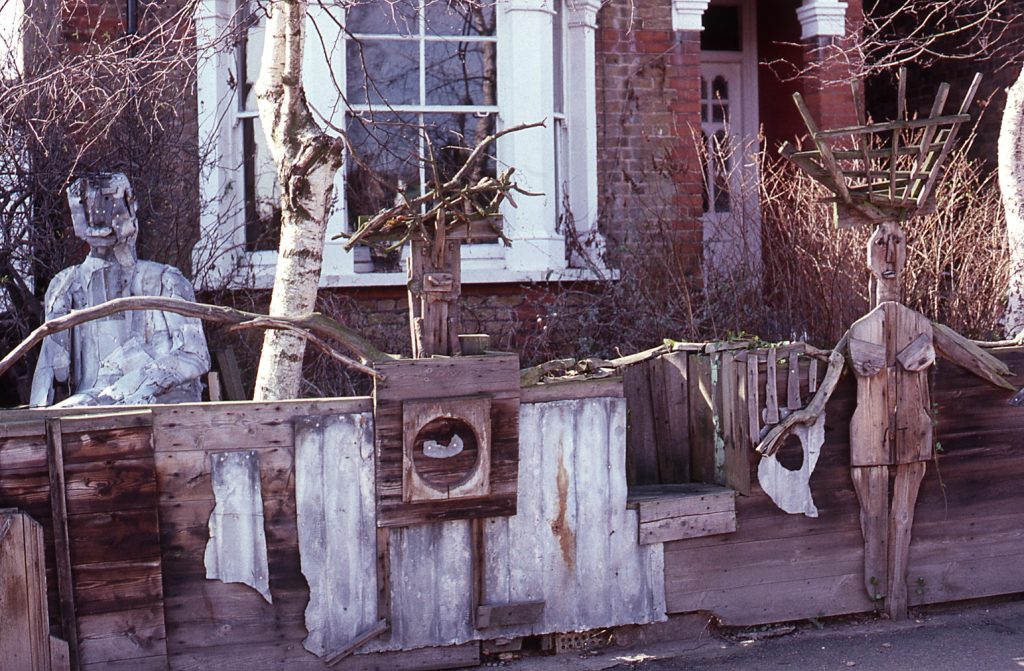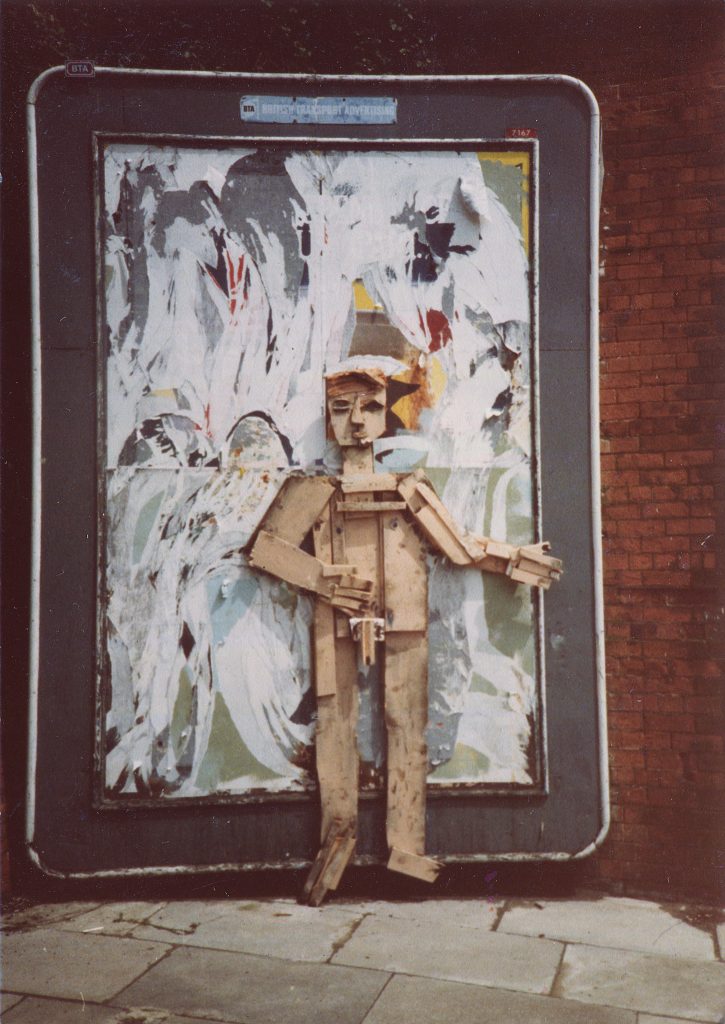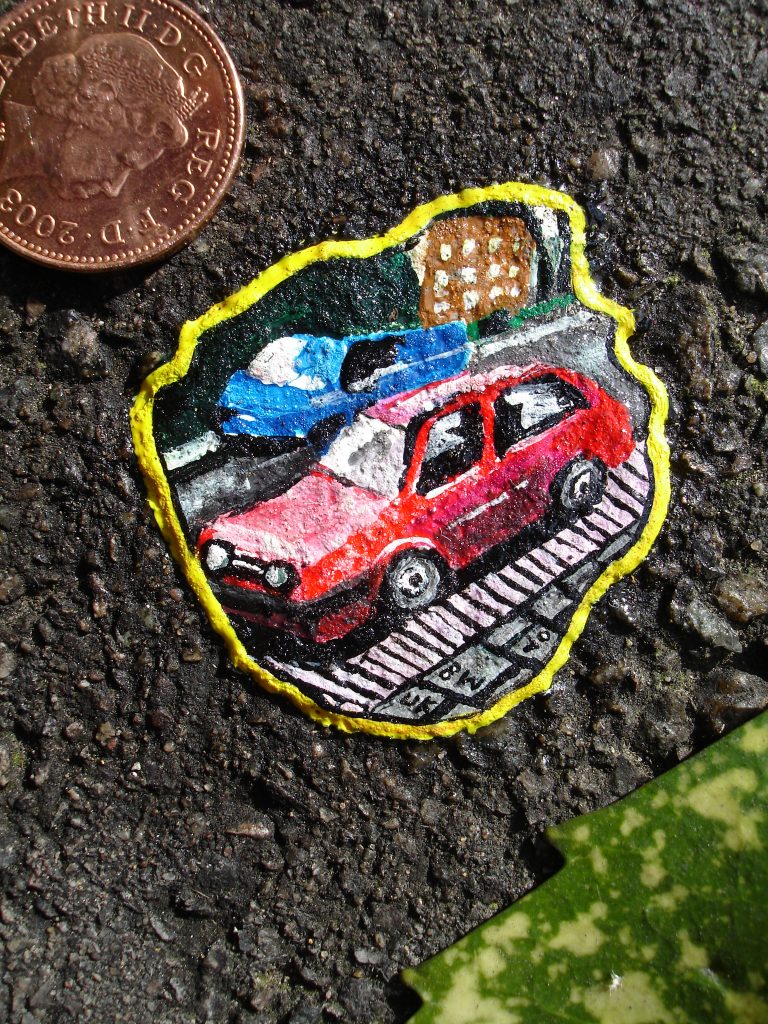Ben's story
Ben Wilson was born in Cambridge and grew up in Barnet, North London, in a lively and creative household in which he was one of six children. Both his parents were artists and throughout his childhood he made things – from clay, bricks, wood or whatever was at hand.
In his teens, both at home and at school, Ben began creating large wood sculptures: outsized human figures, still lifes, tables and chairs. During his art foundation course at Middlesex Polytechnic he seized the opportunity to construct the first of his many art environments – large-scale structures that you can climb on or walk inside – in the wooded area behind the college building.
Tin man and front garden fence with figures and seat, Crescent Road, New Barnet, 1984
Ben also began placing his art in public spaces. Wooden figures and reliefs were surreptitiously positioned around Barnet, to the surprise and delight of the locals who would find them nailed to billboards or left outside the supermarket. Other works were created in nearby woodlands using wood from fallen trees.

Billboard art, New Barnet
In the early 1980s he spent time in Amsterdam with his artist father; later in the decade he and his then partner travelled to the US, Australia and New Zealand. In all these places Ben took the opportunity to work, constructing giant human figures and art environments. Back in the UK in the 1990s he was commissioned to create large-scale architectural pieces, including Tree Keep at Wysing Arts Centre, Cambridgeshire, and others at various schools and community centres in London and around Britain.
In 2003 Ben was in Finland creating a complex and fantastical wooden building at the Contemporary Folk Art Museum at Kaustinen. He was interviewed there by John Maizels, editor of Raw Vision, a UK art magazine. John, and collector and curator Monika Kinley, became strong supporters of Ben and exhibited his work. In 2004 John Maizels featured Ben’s work in Raw Vision’s Equal Rights to Creativity show in London.
Throughout this time Ben was also painting with oil pastels and acrylics; and he began working with cast-off rubbish: cigarette butts, tin cans, crisp packets, juice cartons etc. This was a very conscious, emotional and political decision to challenge consumerism’s adverse impact on people and the environment, a concern of Ben’s art from the very first. In 2003 he began experimenting with painting on discarded chewing gum. From October 2004, although continuing his work on wood sculptures, chewing gum art became his principal focus as he started work on a vast sequence of gum pictures that began in Barnet High Street and would eventually touch most of North London and beyond. It would be the first of Ben’s many chewing gum trails, the most celebrated of which are the trails (2011 to the present) that cross the Millennium Bridge from the St Paul’s side and go into Tate Modern.
In a visual world dominated by the mercenary imagery of advertising, Ben’s generous jewel-like chewing gum pictures are easily overlooked. They’re there to be discovered by those who are aware of their surroundings, or who just notice them by chance.












